changing the world an intervention session at a time, or trying to.
Don't wanna be here? Send us removal request.
Text
Community Chronicles: Embracing Diversity-> Healing Holistically
Walking into the community, a physically, culturally and intellectually different being 5 weeks ago, was daunting. It was daunting because that is the expectation set of the community block. Having previous students always describe community as the hardest block, there is so much fear walking into the community, solely because we are different. When I think about it, we have always been taught our differences separate us, but this block has shown me it doesn��t have to be that way. Our differences teach us that everyone has something to contribute, and that it gives way to use other people’s experiences and lessons to shape life and therapy itself.

As we treat, individually and collectively in our communities, we recognize there is so much more to what falls into the notion of “holistic intervention”. We walk and take the journey with each individual in the community and this way, we are always being exposed to challenges or barriers. This paves the way for us to start thinking further about where to intervene, how to change generational systems while still approaching this with cultural humility, who to speak to and when to advocate. These are notions that we have learnt for the first time away from the prescribed way of treatment in hospitals and clinics we learn through the medical model. As our aim moves to a community-level practice approach, we see the gaps and work our way into not only clinics but schools, community halls, feeding initiatives, the library, businesses and homes. If we use theory to justify this practice, we are implementing intervention through promotive and preventative measures, addressing as many of the challenges before it reaches a point of long-term harm to the community. (Lauckner et al., 2018)

Culturally and contextually appropriate interventions is one of the most important components I’ve learnt to attempt to use in my intervention. Although the fundamentals of occupational therapy are constant as set out in the OTPF and other frameworks, the implementation strategies should always be customized to the community's unique cultural and environmental characteristics. (Taylor, 2004) I have learnt the value of taking into account the socioeconomic, cultural and environmental factors that make way for barriers and strengths. The cultural dynamics of the community also had a significant impact on how people perceived their health or their circumstances. In order to provide client-centered care, with the help of ongoing research, communication with members in the community and help from the community I accepted the challenge of learning, comprehending and adjusting to various cultural ideas and practices as an OT student.
We had also discovered that the success of our time spent on projects is largely dependent on collaboration. Engaging with transdisciplinary teams and other healthcare providers helped develop integrated strategy to address the community needs. Just by communicating, creating relationships and keeping our promises, we were able to access more resources and perspectives to offer increased holistic care and assistance to people and communities. My collaboration with nurses, teachers, stakeholders and community workers added to my mental OT Toolbox as we brainstormed and discussed ideas and challenges. It was through this interprofessional teamwork, I learned the value of group problem-solving and the power of different viewpoints. (Vaughan, 2023)
This aided in an area with huge gaps seen, sustainability. As a student in the last block, I have seen a variety of short-term projects that sought to solve urgent problems but had little lasting effect. We have had to come up with more sustainable solutions and adaptations to ensure carryover and continuity after the block. Training local community members on OT relevant knowledge enhances the success and long-term effect as these principles will be ongoing, as we ran training amongst staff at schools on red flags in children and a programme to match this as well as the NPO Denis Hurley Centre on psychodynamics and education on our profession. (Rivera, 2023) In addition, equipping individuals who experience occupational marginalization through skill-building workshops and advocacy initiatives can help cultivate a sense of initiative and inclusion within the community, as we attempt to focus on strengths in the youth development programme and advocate for easier access to contraception for teenage girls. (Sayers, 2023)
A part of what contributes to this sustainability however, is involving the relevant parties who agree and are willing to take the initiative and be a part of the drive and call for action in the community.
In addition to some of the professional insights gained, my experience in the community has had a profound impact on my personal growth. It taught me resilience and adaptability as I confronted challenging and unfamiliar circumstances while overcoming the lack of resources, cultural differences, and language barriers which required me to step out of my comfort zone, brushing up on my isiZulu and communication skills.

Working in the community also highlighted the urgency of social justice and equitable healthcare. Witnessing the levels of poverty boosted my awareness of my role as an advocate for marginalized populations. This experience instilled within me a sense of social responsibility, fueling my passion for taking action in community development.
Looking ahead to my community service year, these lessons have direct implications for the way forward. Continuing to prioritize cultural competence and adapt my practice to the unique needs and perspectives of the community as I seek opportunities to engage with local traditions, beliefs, and customs to ensure a culturally sensitive approach to therapy. I will aim to continue to build strong working relationships with members of the MDT and TDT to provide comprehensive, client-centered and community-centered care. By actively engaging in lifelong learning and fostering a culture of shared learning, I can contribute to a more integrated healthcare system that maximizes the potential impact of therapy.

I aim to continue to explore proactive initiatives, innovative techniques and equipment that can be adapted in rural settings to address the challenges of limited resources. This could include community-based interventions and collaboration with local organizations and stakeholders to leverage resources and maximize impact and carryover. Advocacy for improved healthcare infrastructure for accessibility and increased funding for rural healthcare must also remain a priority for OTs. Through these interventions, communications and initiatives, the aim is to drive the change to start addressing as many areas of the social determinants of health in a sustainable way.

In retrospect, my initial apprehension about the community block seems like a distant memory now. I discovered that our differences were not barriers but bridges to understanding. As we immersed ourselves in the community, we realized that the concept of "holistic intervention" goes far beyond what we initially understood. We were forced to expand our critical thinking and approach, learning to advocate, adapt, and apply theory to practice in innovative ways. Our aim shifted towards addressing challenges at their root, preventing long-term harm to the community.
In the end, the community block has not only broadened our horizons but also deepened our commitment to holistic care. We now understand that it's not enough to treat individuals in isolation; we must consider the entire community as a client, nurturing its well-being from every angle. Through cultural humility and a collective effort, we're not just changing lives but also transforming generational systems. This block has not only challenged us but has also equipped us to make a real impact on the communities we serve. Our journey continues, and as we move forward, we carry with us the valuable lessons learned in these five weeks, lessons and conversations that will shape our practice for years to come.

References:
Barker, L. N., & Ziino, C. (2010). Community rehabilitation: “home versus centre” guidelines for choosing the optimal treatment location. International Journal of Rehabilitation Research, 33(2), 115–123. https://doi.org/10.1097/mrr.0b013e32832e6c73
Lauckner, H., Leclair, L., & Yamamoto, C. (2018). Moving beyond the individual: Occupational therapists’ multi-layered work with communities - Heidi Lauckner, Leanne Leclair, Cynthia Yamamoto, 2019. British Journal of Occupational Therapy. https://journals.sagepub.com/doi/abs/10.1177/0308022618797249
McGrath, J. R., Marks, J., & Davis, A. (2023). Towards interdisciplinary rehabilitation: further developments at Rivermead Rehabilitation Centre - Joanna R McGrath, Julie A Marks, Alison M Davis, 1995. Clinical Rehabilitation. https://journals.sagepub.com/doi/10.1177/026921559500900407
Rivera, J. (2023). A Scoping Review of Interventions Delivered by Occupational Therapists in School Settings. Journal of Occupational Therapy, Schools, & Early Intervention. https://doi.org/10.1080//19411243.2023.2232806
Sayers, B. (2023). Collaboration in School Settings: A Critical Appraisal of the Topic. Journal of Occupational Therapy, Schools, & Early Intervention. https://www.tandfonline.com/doi/full/10.1080/19411240802384318
Taylor, R. R. (2004). Chronic fatigue syndrome: traditional and community-based approaches to rehabilitation. Health & Social Care in the Community, 12(3), 171–185. https://doi.org/10.1111/j.1365-2524.2004.00485.x
Vaughan, E. M. (2023). The Rationale and Logistics for Incorporating Community Health Workers Into the Multidisciplinary Team - Elizabeth M. Vaughan, Aliye B. Cepni, Uyen Phuong N. Le, Craig A. Johnston, 2023. American Journal of Lifestyle Medicine. https://journals.sagepub.com/doi/10.1177/15598276231151866
0 notes
Text
Building up our future, piece by piece.
When I ponder over the sustainable development goals, I see a puzzle. With each goal being a piece that fits in with another to create an image or picture of the future we want to achieve. As I have explored myself and the community, trying to integrate one into the other in these weeks that have passed, I have found that I have had to shape myself and fit myself in. This is why I now identify just as much as a puzzle piece. As OTs, we are constantly finding the gaps and fitting ourselves in, this is creating the bigger picture. (Wagman et al., 2020) In each goal, we see there is something more that can be done, and by taking the initiative to equip the community with the start of the thought process and action, we are showing them that they too, can be puzzle pieces.
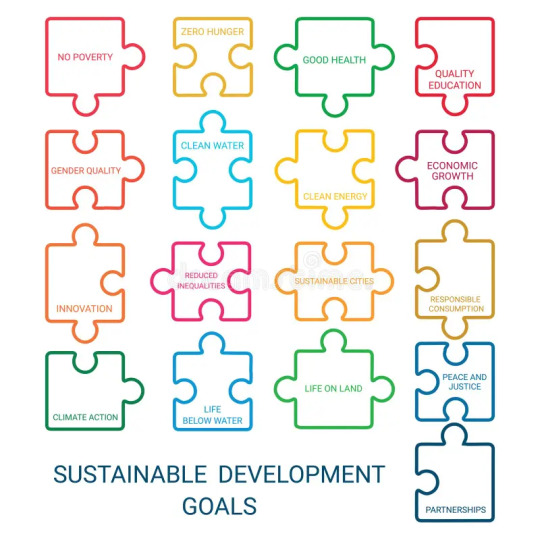
SDG 2: Zero Hunger
Food security remains a critical challenge in rural South Africa, where limited access to nutritious food contributes to high levels of malnutrition. At Denis Hurley Centre, high nutrition meals are prepared and provided 3 days a week to a large population of homeless, sheltered and hungry individuals. A similar programme is carried out in the soup kitchen at Cato Crest. We have seen that in most of the lunchboxes we see open, we are seeing unhealthy easy lunches that busy moms are packing for school. We are aiming to integrate the after-school youth programmes for education on healthy physical living and eating to be able to reach the soup kitchen for provision of after school meals if possible, as well as refer our clients we see at the clinic who struggle with food security to be able to receive meals from the community.
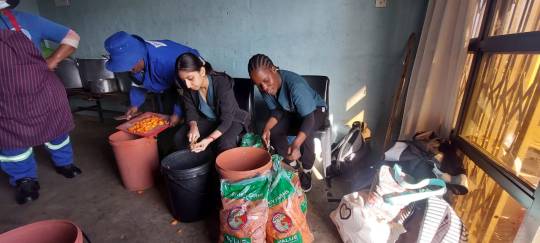
(consent obtained)
SDG 4: Quality Education
The first place I’ve found myself trying to fit in and close gaps are in schools. Access to quality education is crucial for the development of the community. In Cato Crest community, we have been exposed to the learning environments of creches, primary schools and high schools. There have been instances where teachers pick up red flags in students that prevent them from achieving their optimal function as well as a case where we had found a preschooler in a creche being excluded from ongoing class or group activities, with red flags on ASD being noticed but not addressed by parents and teachers. As OTs we are aiming to support this goal by working with educators on picking up red flags, addressing this with parents despite stigmas and taking this further to clinics and organizations such as KZN Children for referral. In many of the schools, the reality is that we are seeing 50 children for every 1 teacher. This takes a toll on teacher’s occupational efficiency and therefore negatively affects the education being delivered. We therefore also aim to develop inclusive educational practices for students with a delay in achieving the set-out norm at schools by providing youth programmes for after school including the social worker that may incorporate and re-enforce learning in a fun engaging way while also focusing on the strengths of these children thereby promoting equal educational opportunities for all. (Modise, 2021)
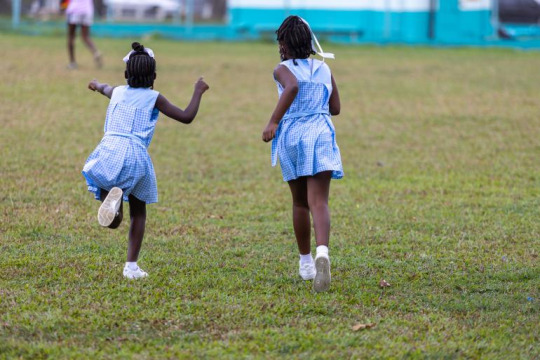
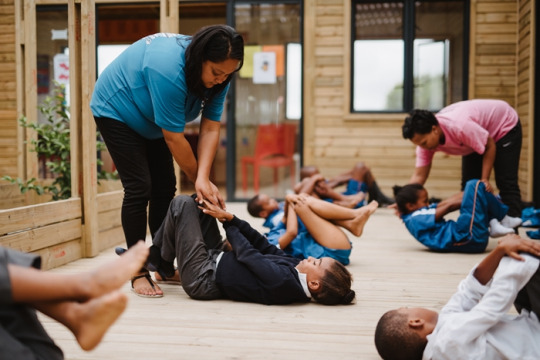
SDG 1: No Poverty
Poverty is a pervasive issue in communities all over, this stands to affect people’s ability to access basic necessities and healthcare services, we see this most prominently at Denis Hurley Centre where people are homeless living on a day to day plan basis. The effects of poverty are seen to result in other humanity-crushing ends such as crime, substance use, sickness and mental health illness. We attempt to address this goal firstly by integrating into education and youth programmes as mentioned, thereby putting individuals in positions so as to not end up in despair from no sustenance through meaningful occupations such as jobs or leisure. We have also started promoting economic empowerment through vocational training and financial planning in our women’s empowerment and substance use programs. By enhancing job prospects through skills sets and income generation, we have equipped these people who most of the time have little to no hope, be the agent of action to sustain themselves and possibly their families.
SDG 5: Gender Equality
Many rural South African communities adhere to traditional gender roles, limiting women's autonomy and opportunity. Occupational therapy can address gender disparities by fostering economic empowerment and promoting gender equality through vocational training and entrepreneurship initiatives. By enabling women to participate actively in economic activities, occupational therapists can help break the cycle of poverty and promote social progress. (Bradshaw et al., 2017)
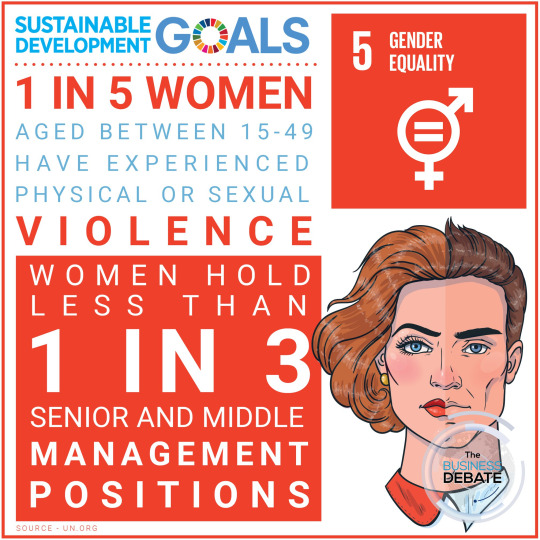
Through these vocational training and skill building sessions we can address the challenge of gender inequality by equipping women through skill development and promoting equal access to resources. In rural South Africa, traditional norms and gender-based discrimination often also limit women's opportunities. Promoting women's participation in decision-making processes, ensuring access to education and healthcare services, and working against gender-based violence are effective strategies towards achieving gender equality. (Moyo, 2019) We are attempting to educate and break through generational stigma through our involvement in the women’s group, high school, where risk of teenage pregnancy and drop out is so high, but also in the Cato Crest Community where we prioritize and carry out mental health and maternal mental health specifically through health promotion where moms have come forward in not coping due to their injustices and life load.
And now finally, as much as we want to work on the parts of the puzzle people usually lose or don’t look at, naming mostly precipitating factors to barriers in occupational wealth, those that tend to be forgotten in social determinants of health, we must implement our healthcare provision alongside all.
SDG 3: Good Health and Well-being
People in the community often face limited access to healthcare services due to fluctuating financial or personal support, accessibility due to disability, and a broken healthcare system that consists of limited staff and restraints on service provision due to the wide implementation of the medical model. This results in collective poor health outcomes. We aim to contribute to this goal by providing preventive healthcare services through education, promoting healthy lifestyles through the creation of leisure, skill building and support programmes, and addressing common health conditions prevalent through community-based interventions and awareness campaigns, where many individuals can be reached, seen and heard in the company of each other to break the trends, stigmas and stagnancy, ensuring overall well-being is carried out together. An example of this presents in the promotion of good working postures and physical or lifestyle advices we are taking to the women in the soup kitchen as an active living programme to target conditions such as arthritis, blood pressure, carpal tunnel and back pain, using a by the way approach to respect their cultural routines and views while incorporating these principles into what they already are doing.
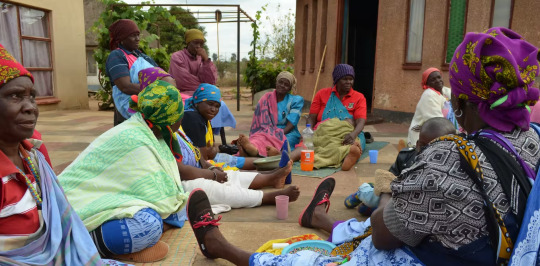
In conclusion, as we reflect on the Sustainable Development Goals and the intricate puzzle they represent for our future, it becomes evident that we, as occupational therapists, are essential puzzle pieces in this grand picture of progress. Our journey has led us to the heart of community, where we are actively bridging the gaps and shaping ourselves to fit into the broader mosaic of sustainable development.
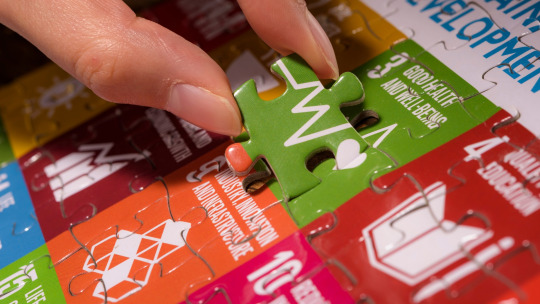
As we work on these critical aspects of sustainable development, it's essential to remember that healthcare provision must go hand in hand with all other efforts. Together, as puzzle pieces fitting into the larger picture, we can break down barriers, challenge stigmas, and create a brighter, more inclusive future for all. Our journey continues, one piece at a time, towards the realization of the Sustainable Development Goals and the better community we envision.
References
Bradshaw, S., Castellino, J., & Diop, B. (2017). Women’s role in economic development: Overcoming the constraints. Did the Millennium Development Goals Work? https://doi.org/10.1332/policypress/9781447335702.003.0008
Moyo, T. (2019). Achieving Gender Equality and Women’s Empowerment in Sub-Saharan Africa: Lessons from the Experience of Selected Countries - Theresa Moyo, Rogers Dhliwayo, 2019. Journal of Developing Societies. https://journals.sagepub.com/doi/10.1177/0169796X19845957
Modise, M.-E. P. (2021). Entrepreneurial Leadership in Early Childhood Education for Sustainable Development in South Africa. Journal for the Education of Gifted Young Scientists. https://doi.org/10.17478/jegys.1010680
Wagman, P., Johansson, A., Jansson, I., & Lygnegard, F. (2020). Making sustainability in occupational therapy visible by relating to the Agenda 2030 goals – A case description of a Swedish university. World Federation of Occupational Therapists Bulletin. https://doi.org/10.1080//14473828.2020.1718266
Otekunrin, O.A., Momoh, S. (2019) How far has Africa gone in achieving the Zero Hunger Target? Evidence from Nigeria. Global Food Security 22 (2019a): 1-12. https://doi.org/10.1016/j.gfs.2019.08.001
Take Action for the Sustainable Development Goals - United Nations Sustainable Development. (2023, May 31). United Nations Sustainable Development. https://www.un.org/sustainabledevelopment/sustainable-development-goals/
Sarkis, S. (2019, March 5). Gender Inequality Led to the Rise of Women Entrepreneurs. Forbes. https://www.forbes.com/sites/stephaniesarkis/2019/03/05/gender-inequality-led-to-the-rise-of-women-entrepreneurs/?sh=266396794374
0 notes
Text
Strength in Diversity as the new notion for future Occupational Therapy
As an OT student going on fieldwork to clinics, hospitals and various institutions, one hears of occupational injustices through the stories told by clients. It is not until being in the community, around occupational beings who have been exposed to contextual, socio-economic, physical and psychological barriers, that I as an aspiring OT have really seen and understood the injustices in the community, in areas that require so much change. It was a shock to me realizing that I needed this secondary trauma to develop an empathetic and holistic approach to my therapy and contribution, taking every being as they are and using that to reach the best outcomes, no matter how big or small. I sit here and ask myself the question, why did it take me four years to really see the gaps in our holistic view of a client, a group or even a project? To that I answer, my thinking has been that of a minority world view.
I had come across a video of Whalley Hammel's address at the WFOT 2018 at the beginning of this year and it is only now that I have understood the concepts she had discussed.
youtube
The occupational therapy profession, like many others, has a rich history of theories and practices that have predominantly emerged from a Western industrial context, representing a mere 12% of the global population. (Hammel, 2020) This minority world perspective, while valuable in its own right, often falls short in addressing the complex challenges faced by the majority world – where approximately 80% of disabled individuals reside, predominantly in rural areas, grappling with severe poverty and social marginalization. (Watson, 2018)
Our theories, rooted in the experiences and realities of the minority world, may inadvertently perpetuate inadequacies due to their limited insight into the complex global issues faced by the majority world. (Hammell, 2017) It’s imperative that we critically examine the origins and biases inherent in these theories. We must ask ourselves whether most of our occupational therapy theorists come from positions of opportunity, advantage, and privilege.
This presents as a profession-based injustice perpetuating systemic biases, reinforces established power structures, and hampers the profession's ability to provide comprehensive care to diverse populations. Limited representation of individuals from marginalized communities undermines the profession's potential to address social determinants of health effectively. (Hammell, 2017)
This brings us to the next injustice, occupational marginalization. Groups of marginalized people result in limited or no occupational choice due to the effect of historical and political patterns to date. Their ability to be the agent to their engagement is prevented by their socio-cultural context and the effect on individual factors itself.
The reality is that individuals choosing shaping and orchestrating their occupation is not a universal norm, but privilege. Occupational choice is not granted to many in the community as we see people doing what needs to be done, or doing for survival as many of the conditions that the marginalized have experienced have not changed in the past 30 years. (Delport & Tshepo Lephakga, 2016)
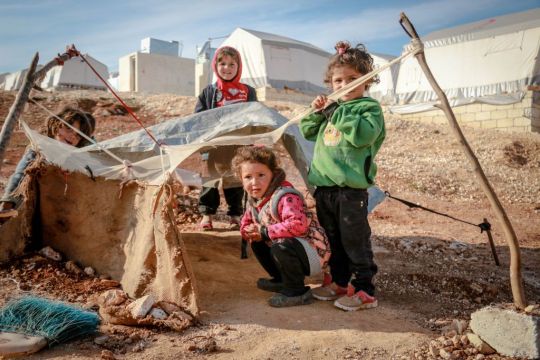
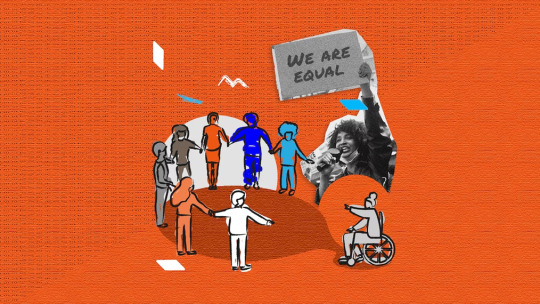
There is however the other side we see in communities where we have whole individuals actively engaging in occupational choice, and the global neoliberal risen idea of the particular choice being a negative one. This may not be the case if we consider contextual, environmental and cultural aspects where there is increasing expression of freedom in those doing what leads to sense of belonging. (Hammell, 2017) This is seen in teenage mothers in the community who face so much of stigma and stereotypical judgment from the community and at times OTs themselves make assumptions on imposed occupations such as these, despite them choosing and thriving in the path of attaining a maternal role in their life. It is also seen in the creche teacher’s goal at Dalton creche in the Durban CBD, where her goals for these marginalized yet brilliant children are for them to choose to learn, succeed and grow. However, her primary concern in the work she does is shaping individuals that can make good occupational choices regarding not succumbing to the harsh realities of the environment they live in, for them not to replicate the disturbing behaviours they see outside of their time at creche at home. Again though, this is purely context based. In situations of severe environmental challenges like these, in intervention itself we are required to ask ourselves, what choices, besides school, can we offer for this child to thrive.

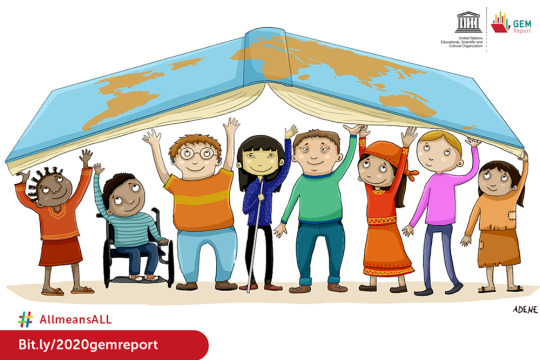
Occupation enables people to meet their basic needs, develop their personal capacities and skills cope with the environment, develop their identity and realize their aspirations. There is a very rigid expectation of what theories and frameworks classify as meaningful. An example presents in the client-centred desire for independence. However, there are many cultural norms that defy this notion to certain populations where in traditional households, men and the elderly generally carry out their occupations with a level of assistance. This is why we are required to view, learn and critique multiple diverse perspectives to uphold cultural humility. (Debbie Laliberte Rudman, 2015) To build models and theories that are responsive to this, we will create culturally inclusive, relevant and effective intervention by exploring other’s priorities and values. (Sakellariou & Algado, 2006)
These neoliberal notions presented, whether intentionally or unintentionally, need to be analyzed and challenged in the neutral and objective thinking of our scope in so many areas. (Debbie Laliberte Rudman, 2015) According to Sakellariou and Rotarou (2017) neoliberal assumptions about what is valuable and desirable are promoted and applied in contexts that are politically, culturally, economically and socially dissimilar, and occupational therapy practices informed by such assumptions may be inadequate, inappropriate, irrelevant and oppressive. We are required to advocate against these mindsets and monocultural shaping of theories and perceptions.

Occupational therapy is to then use the concept of triangulation to respect that our diversity in occupational engagement globally is meant to contribute and connect and is not only derived from our languages, race, religious and cultural experiences but also from gender identities, ages, disabilities, sexual orientation, location in community and ethnicity.
In conclusion, as I embark on my fieldwork journey and reflect on the eye-opening experiences that have shaped my understanding of occupational injustices, I can't help but wonder why it took me four years of academic study to truly see the gaps in our holistic view of clients and communities. The answer lies in the realization that my perspective has largely been influenced by a minority worldview. As I continue my journey in the field of occupational therapy, I am committed to advocating, expanding my perspective through a range of diverse experiences and contexts, embracing a more inclusive and culturally sensitive approach, and striving to bridge the gap between the minority and majority world views within our profession. It is through this introspection and commitment to change in that we can hope to create a more equitable and effective occupational therapy domain and practice for all.

References
Adams, S. (2021). Politics and paradigms: Challenging the status quo. Nursing Praxis in Aotearoa New Zealand, 37(1), 48-49. https://doi.org/10.36951/27034542.2021.016
Debbie Laliberte Rudman. (2015). Situating occupation in social relations of power: Occupational possibilities, ageism and the retirement “choice.” South African Journal of Occupational Therapy, 45(1). https://doi.org/10.17159/2310-3833/2015/v45no1a5
Delport, P. T., & Tshepo Lephakga. (2016). Spaces of alienation: Dispossession and justice in South Africa. HTS Teologiese Studies / Theological Studies, 72(1), 9. https://hts.org.za/index.php/hts/article/view/3567/8676
Sakellariou, D., & Rotarou, E. S. (2017). The effects of neoliberal policies on access to healthcare for people with disabilities. International Journal for Equity in Health, 16(1). https://doi.org/10.1186/s12939-017-0699-3
Simó, S., & Sakellariou, D. (2016). Sexuality and Disability: A Case of Occupational Injustice - Dikaios Sakellariou, Salvador Simó Algado, 2006. British Journal of Occupational Therapy. https://journals.sagepub.com/doi/10.1177/030802260606900204
Thato Masiangoako. (2019). Rationalizing injustice: The reinforcement of legal hegemony in South Africa. South African Crime Quarterly, 66, 7–18. https://doi.org/10.17159/2413-3108/2018/i66a5633
Watson, L. (2018). Occupational therapy in South Africa after WFOT 2018 - Lyn Watson, 2018. British Journal of Occupational Therapy. https://journals.sagepub.com/doi/10.1177/0308022618804694
Hammell, K. R. (2017). Occupational injustice: A critique- Karen R. Whalley Hammell, Brenda Beagan, 2017. Canadian Journal of Occupational Therapy. https://journals.sagepub.com/doi/10.1177/0008417416638858
Hammell, K. W. (2020). Action on the social determinants of health: Advancing occupational equity and occupational rights. Cadernos Brasileiros de Terapia Ocupacional, 28(1). https://doi.org/10.4322/2526-8910.ctoarf2052
1 note
·
View note
Text
The domino effect of maternal health, child care and the community, can we prevent this collapse?
Why do we refer to or assume the man as the head of the household when obtaining collateral information from patients, or in topic of conversation in general? Why is the question, “And is baby’s dad helping out with the money, the clothes the shopping?” such a set predominantly asked one? This stereotype is central mostly to the man himself, as in reality 29.8% of households are women headed, with 43.1% of children in South Africa living only with their mothers. It is because of this, communities need to come together and recognize the importance of a mother and the effect that their presentation has on the children of today. (Statistics South Africa, 2019)
Women are entering roles of a mother at an earlier age as we move through generations, which is why in my opinion, generational trends need to be broken to shelter our women from harsh circumstances, and equip them with the strength to nourish and nurture the youth of today.
According to Rose M (2016), poverty, malnutrition and neglect are of the biggest factors that contribute to maternal ill health and neonatal mortality. This is seen in the Cato Crest community area where mothers are single and unemployed taking care of 2 children, struggling to come up with ways to feed them due to scarce high-in-protein meals, and substituting this with inadequate meals, high in fat, sugar and oils. Women have expressed the reason behind this approach to nutrition is the ease in accessibility and the familiarity or association to their childhood and how they preferred to eat growing up. From the physical and mental exhaustion mothers are experiencing with workload and shame from the community, a quick ready to eat fixed meal is the preferred solution, as preparing warm cooked meals is not how women perceive their role or agency as a mother.
This speaks to the transition in gender norms felt by our young mothers in the community from the grandmothers who till today play a big role in care of the child and overseeing nutritional food being cooked for the children. Grandmothers are found to feel a sense of role fulfillment from feeding their families with traditionally cooked meals, unlike the young mothers of today, and although this help is usually welcome from mothers, it does also come with feelings of a change in role provision and disempowerment for them when they are attempting to move away from traditional standards to cope with other burning responsibilities they may have, but are being shamed for this change in provision of care for their child. (Erzse et al., 2021)

This is a huge risk factor in the topic as stigmas and perceptions of the mothers in the community can lead to a lot of shame and guilt, which can stem to maternal depression. This is one of the leading causes of child maltreatment which has socio-economic effects on the youth due to poor academic performance and changes in behavioral patterns associated with this. In worse scenarios, which sadly can be assumed in our despaired communities, maternal depression may lead to physical and psychological abuse or trauma inflicted onto the child. This just speaks on one aspect of a factor that affects maternal and child health, amongst others such as gender-based violence, socio-economic barriers.
Maternal depression can be a risk factor for pathology in children due to the effect it can have on brain and cognitive development. Research has shown maternal mental health issues directly have a declination effect on children’s academic abilities in foundation stages of reading and arithmetic function. These poor cognitive abilities along with lack of emotional connection have a domino effect on mental health of the child, which sets them up for unhealthy coping mechanisms and a decline in language and social skills, readiness for school and overall health of the child. This being the developmental and scholastic delay in the schools in Cato Crest community observed may be an attributed hypothesis to inadequate child care being provided at home due to the load mothers are carrying.

This will have a paradigm effect on children as they would have solid interpersonal relationships through a strong mother figure who sees to their medical and developmental requirements as they grow up in comparison to the already existing lack of emotional attachment seen between mother and child. Mothers are seen interacting less with their children and showing less sense of nurturing and affection in the community of Cato Crest generally. As they are dealing with the overbearing feelings of depression, they may miss gaps in development and wellbeing of their children.
Ensuring service provision to promote maternal health care such as health promotion campaigns on pregnancy, nutrition and management at accessible campaigns such as immunizations, regular check up intervals with doctor and wellness groups, will help women will feel more equipped to face the realities of a mother in the community. Carryover can be through continuation of wellness groups and support groups with mothers in the community to promote mental health and occupational balance for a sense of self-efficacy and enjoyment in their role of being a mother. (Tome et al., 2020)


Screening tools such as the Self-Reporting Questionnaire, the Zung Self-Rating Depression Scale, the Postpartum Depression Screening Scale and the Edinburgh Postnatal Depression Scale, are widely available and accessible for use at a general informal level. (Kebogile Mokwena, 2021) These are all quick and easy to administer tools which can largely point to whether maternal depression is a concern or not. With initiative and political will, screening is to be carried out to gauge the level of how large the problem is in a particular community, such as it is being done in the Cato Crest community setting of the hall and at the Cato Manor clinic carried out by the students. This provides us with the opportunity to screen for potential OT relevant clients, prevent maternal burnout by providing coping strategies and also reducing stigma on maternal health trends.
Inadequacies and social injustice come through in the failure to carry out this screening at primary health care level, failure to recognize and intervene in maternal mental health care and general maternal health results in a long-term effect that impact the relationships between mothers and children, and the future of the children themselves, preventing their growth, success and thriving in the community as they go through their developmental process. Since mothers are leading our houses and our future in the community by nurturing these children, it is absolutely essential that social support is provided where needed with regards to education, coping and loving their child.
ZUNG SELF-RATING DEPRESSION SCALE- https://sadag.org/images/stories/zungselfrateddepressionscale.pdf
Erzse, A., Goldstein, S., Aviva Tugendhaft, Norris, S. A., Barker, M., & Hofman, K. (2021). The roles of men and women in maternal and child nutrition in urban South Africa: A qualitative secondary analysis. Maternal and Child Nutrition, 17(3). https://doi.org/10.1111/mcn.13161
Tome, J., Mduduzi Mbuya, Makasi, R., Ntozini, R., Prendergast, A. J., Dickin, K., Pelto Gh, Constas, M. A., Moulton, L. H., Stoltzfus, R. J., Humphrey, J. H., & Matare, C. R. (2020). Maternal caregiving capabilities are associated with child linear growth in rural Zimbabwe. Maternal and Child Nutrition, 17(2). https://doi.org/10.1111/mcn.13122
Statistics South Africa. (2019). National Poverty Lines 2019. Pretoria. http://www.statssa.gov.za/publications/P03101/P031012019.pdf
Kebogile Mokwena. (2021). Neglecting Maternal Depression Compromises Child Health and Development Outcomes, and Violates Children’s Rights in South Africa. Children (Basel), 8(7), 609–609. https://doi.org/10.3390/children8070609
Rose M., Mmusi-Phetoe. (2016). Social factors determining maternal and neonatal mortality in South Africa: A qualitative study. Curationis, 39(1), 8. https://curationis.org.za/index.php/curationis/article/view/1571/1966
0 notes
Text
Advice to my future self as a person and as an OT.

I’d like to be writing this letter to a girl who is now a standard graduated superhero, I mean OT, living an independent, BALANCED life, with maybe 3… or 5 more dogs, and finally healthy sleeping patterns. And you know what, that is exactly who I’m writing to, because that’s what I aim for.
Dream believe achieve, right? It will never just go to achieve. As with most goals, there will be a sequence to follow to get to the end.
I know this is always everyone’s standard resolution, but there is so much value in taking care of your mind, body and soul. Now by no means does that mean Neha, immediately turn into a Comrades runner or deadlift 75kgs in the gym, because all that would be is pushing myself over unrealistic boundaries, which will result in a fall and crash. Instead, I want to take smaller steps like daily jogs with my dog, dancing to music while getting chores done and just slowly building up my strength and endurance at my own pace. Because with all of the above comes balance, which you have to have along with time management. Taking a little of each relevant meaningful engagement, spreading it on a wheel and just getting up to spin that wheel and get it done. C’mon, how OT is that. There are no longer restrictions, there will be a time and place for everything, to do the things I love like finding time for dancing and hiking; to have time for the important people around me; to put my utmost effort and passion into my career and to be aligned with my mental and physical health.
I’m hoping in all these small little steps, comes the big difference of change, not a drastic change in life but just a change in self-love. Don’t be too hard on yourself, remember mistakes are a stepping stone for progress, criticism when constructive comes from good intention and you don’t have to go through everything alone.

So, 1. One step at a time, at your pace. 2. Don’t neglect your health and wellbeing. 3. Its okay to ask for help. 4. Give time the value it demands. 5. SELF-LOVE!!
And really achieving this OVERALL Aim, is the biggest factor in becoming the OT I want to be.

A physically and mentally fit OT is the brightest OT in the room, (especially after the good posture from all the squatting back protection principles 😉).

What I would tell future OT Neha is a simple REMINDER! The reminder that everyone needs OT, even us. So, I will constantly remind myself that its okay to OT myself. At the end of the day, my client is a person, and so am I.

Considering a holistic context is what I find so important. Usually the client is used to something, and adapting to a whole new lifestyle because of an injury or disability is a lot to take in, which is why its so important to identify and prioritise what the client wants out of therapy and to include them in programme planning and goal setting. Following this, progress and recovery is different for everyone. It’s vital to remember that small progress as time goes on may result in the biggest goal achievement. Which is why a bad day for client or a session that doesn’t go as planned does not make me a bad OT. It just means we get up and OT again tomorrow.

And the last thing I’d like to say to you, future Neha, is that lifelong learning is key. You as a person and as an OT should never stop exploring, discovering and being curious. Knowledge in the scope of OT and in the vast world in general is limitless, and will be your biggest asset.
3 notes
·
View notes
Text
Occupational Barriers experienced in mental health.
Presentation of anxiety, depression, psychosis and many others are not considered disabilities and do not spark areas of concern amongst many people today. Since these are disabilities with symptoms that can not always be seen, it is neglected and expected to be treated with no special regard.
Occupational apartheid continuously has a chain effect on people and their performance patterns in our current day-to-day. The constant stigma and lack of education and advocacy for mental health amongst areas of occupation such as education and work lead to neglect in personal health where disabilities are present.
This is primarily because society in general views people with mental health disorders as incapable of occupational competence, whereas they do not understand that with the right adaptations, support and lifestyle changes, such as introducing medication, these people are able to function optimally and just as well as individuals without these diagnoses. Because of these views, there is visibly less opportunities present for these people.
The biggest factor are the symptoms that present, as this may create occupational imbalance. Some of the leading symptoms in mental health disorders are fatigue, indecisiveness, lack of volition and poor end product, amongst many others.

There is research that shows mental health conditions lead to physical health decline or conditions, such as headaches, fatigue and digestive problems, or restlessness and insomnia; which all prove to be symptoms of anxiety and depression. The prevailing of these symptoms can depend on various factors such as genetics, lack of support to change unhealthy behaviour, being less likely to receive medical help or low volition. ("Physical health and mental health", 2022)

Signs that may imply presence of mental illness include changes in affect and behaviour, sleep and appetite, emotional outbursts and substance abuse. ("Nine signs of mental health issues", 2021)
However, balance is the most vital lifestyle factor to implement. With positive self-talk and self-regard and a strong support system, it will be easier to approach lifestyle changes to improve mental health. Taking care of one’s body, stress management and relaxation techniques like meditation, and avoidance of harmful substances and drugs are steps in the right direction. Realistic goals being set in all areas of occupation and seeking help at checkpoints where one knows they are struggling will greatly impact occupational performance and competence as there are always people willing to consider the difficulties and adapt due to the overwhelming pressures the symptoms of mental illness brings about. ("Ten Things You Can Do for Your Mental Health | University Health Service", 2022)
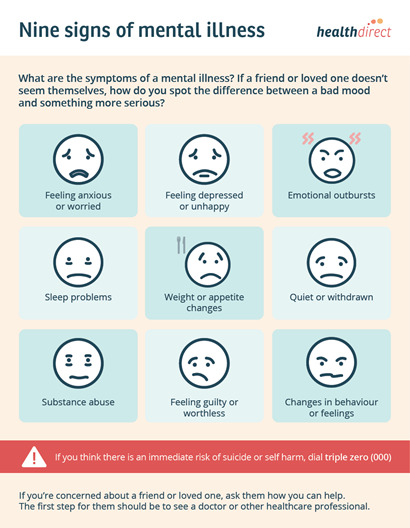
Factors such as environment play a role in this battle due to inclusivity. Not all environments are suitable for people with mental health disorders. For example, there may be people diagnosed with schizophrenia who work in noisy environments amongst many people, and onsets of hallucinations and aggression may cause disruptions in this work environment.
Physical health and mental health. (2022). Retrieved 5 October 2022, from https://www.mentalhealth.org.uk/explore-mental-health/a-z-topics/physical-health-and-mental-health#:~:text=Our%20bodies%20and%20minds%20are,insomnia%2C%20restlessness%20and%20difficulty%20concentrating.
Nine signs of mental health issues. (2021). Retrieved 15 October 2022, from https://www.healthdirect.gov.au/signs-mental-health-issue
Ten Things You Can Do for Your Mental Health | University Health Service. (2022). Retrieved 15 October 2022, from https://uhs.umich.edu/tenthings
#cognitivebehavioraltherapy#generalizedanxietydisorder#stopstigma#talktosomeone#selflove#mentalhealthawareness#wellbeing#recovery#healingjourney#mentalhealthsupport#selfawareness#anxietyrelief#mentalillness
2 notes
·
View notes
Text
Trick or Treat! How has COVID impacted on the mental health of people and my reflections on returning to normal.
After two long years of an inescapable pandemic, we as young practitioners have been given the opportunity to be out and about again, engaging in our relevant occupations, socializing and continuing the process of lifelong learning.
There are however, individuals in settings who have not been able to maximize the benefits of this opportunity coming out of Covid-19 due to a coping adaptation or even growing comfort. There may also be people with mental health issues, who have had a regression, or people who developed mental health illness just from being surrounded by four walls at all times. This, among many other presenting diagnoses that have stemmed from a quarantine and social distancing period is the reality of presenting aftermath of Covid 19 prevalent amongst students.
COVID-19 pandemic triggers 25% increase in prevalence of anxiety and depression in the youth worldwide. (2022). Retrieved 3 September 2022, from https://www.who.int/news/item/02-03-2022-covid-19-pandemic-triggers-25-increase-in-prevalence-of-anxiety-and-depression-worldwide

According to the World Health Organization, the stats of prevalence in depression and anxiety had increased by 25% in just the first year of the pandemic itself, with women and children being hit the worst. Among all, social participation is one of the most significant areas of occupation to students in general, therefore stages of human development childhood, adolescence and early adulthood. The lack of this may have put more focus on other areas of occupation or even led people of these age groups to neglect other areas of occupation due to decreased affect and volition from a sense of loneliness, being overwhelmed from isolation in changes they are experiencing and being overwhelmed by just figures in adulthood at all times who may not fulfil some needs such as learning social skills from situations at school. This would result in changes in behavior that may negatively impact social judgment that is crafted in scenarios amongst school peers.
The other area of occupation that ties into this for students is education, as they were thrown into the deep end of online learning. With no external support and encouragement, volition of students decrease and education may not be prioritized due to not receiving the educational experience desired. A lack of interest in studies led to feelings of inadequacy among many students especially in tertiary education settings. This feeling of lack of accomplishment increased feelings of depression and anxiety due to an uncertain future and career in students. College dropout rates were highest during the first waves of the pandemic. Hess, A. (2020). Some students are considering dropping out of college because of coronavirus. Retrieved 3 September 2022, from https://www.cnbc.com/2020/04/28/students-are-dropping-out-of-college-because-of-coronavirus.html

Returning to normal specifically for individuals in school and college will require a step by step process. Social anxiety and depression will be the largest contributing factors in the interruption of occupational participation and competence in areas of education and social participation as individuals have grown used to independence and isolation, and do not find it easy, or have not gotten comfortable with approaching people in general, which is essential in these settings.

I do believe with the right support, children in school and adults in tertiary education will get back into healthy social engagement, routine and make good use of occupational choices.
We, as OTs must take regard to a call of action regarding creating awareness of the impact of mental health on occupational competence amongst people, especially the range from middle childhood to young adulthood. Simple intervention such as relaxation therapy for anxiety and role playing for impact on social judgment may go a long way by small progress in sessions with people most affected regarding mental health, who are trying to be as competent as possible in their relevant roles and go about their routines with minimal symptoms of low mood, anxiety and frustration impacting on them.

3 notes
·
View notes
Text
Standing on the edge of becoming an OT– reflections on my journey thus far.
My journey with Occupational Therapy did not start with a university application. It started with seeing what OT did for my grandfather with Dementia, and to the extent of what it did for my grandmother in the form of simple caregiver burden programmes. Simple calendars, reminders around the house, a pet-feeding schedule and medication blister packs went a long way. I would say that is where my passion stemmed from, minor change brought upon an individual’s life making major difference.
Seeing simulated cases and then transitioning into contact fieldwork was the first step after choosing the course of OT, and with all the cons of this, so to were there pros. Developing a rapport with clients on a psych block after looking at a screen was the most difficult part at first. Hollis, V. and Madill, H. (2006), Online learning: The potential for occupational therapy education. Occup. Ther. Int., 13: 61-78.
https://doi.org/10.1002/oti.209
It took a few sessions of navigating through open ended questions and not reading from an interview question sheet to come to the conclusion of what OT is, what I believe to be viewing the individual as a person instead of client, taking every aspect of their day-to-day relationships, routines and roles into consideration.

It is from this discovery that I am learning how to use resources, and create alternatives in cases of lack of resources, as I have seen across the range of clients how they already adapt from day to day. This is why I see so much value in OT every day, a person adapts to their changed environment, context or client factor to create a life closest to what they feel as comfortable and suitable to them.

https://www.theothub.com/article/role-ot-rural-south-africa
Creativity, thinking on the spot and working on one factor at a time by paced problem solving comes together to be the biggest lessons I have learnt and tried to put into practice for client-centredness thus far. This is why with every day’s challenges will come new ideas and innovative intervention and I am so enthusiastic to see where this leads me and the profession of Occupational Therapy itself.
7 notes
·
View notes